Click on an image for detailed information
Click on a column heading to sort in ascending or descending order

My
List |
Addition Date
|
Target
|
Mission
|
Instrument
|
Size
|

|
2010-02-17 |
|
Wide-field Infrared Survey Explorer (WISE)
|
WISE Telescope
|
6666x6666x3 |
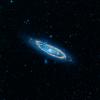
|
-
PIA12832:
-
Our Neighbor Andromeda
Full Resolution:
TIFF
(133.3 MB)
JPEG
(5.128 MB)
|

|
2010-01-06 |
Carina
|
Wide-field Infrared Survey Explorer (WISE)
|
WISE Telescope
|
1000x1000x3 |
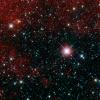
|
-
PIA12486:
-
WISE 'First-Light' Image
Full Resolution:
TIFF
(3.004 MB)
JPEG
(213.3 kB)
|

|
2010-03-06 |
Cassiopeia
|
Wide-field Infrared Survey Explorer (WISE)
|
WISE Telescope
|
3463x1200x3 |
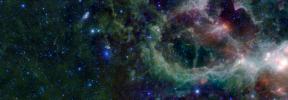
|
-
PIA12865:
-
Maffei 1 and 2
Full Resolution:
TIFF
(12.47 MB)
JPEG
(623.6 kB)
|

|
2010-03-13 |
|
Wide-field Infrared Survey Explorer (WISE)
|
WISE Telescope
|
1476x1475x3 |
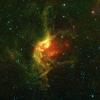
|
-
PIA12868:
-
NGC 7380
Full Resolution:
TIFF
(6.543 MB)
JPEG
(255 kB)
|

|
2010-03-26 |
C/2008 Q3 (Garradd)
|
Wide-field Infrared Survey Explorer (WISE)
|
WISE Telescope
|
2349x1000x3 |
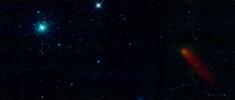
|
-
PIA12985:
-
M3 & Comet Garradd
Full Resolution:
TIFF
(7.055 MB)
JPEG
(198.7 kB)
|

|
2010-04-16 |
Perseus
|
Wide-field Infrared Survey Explorer (WISE)
|
WISE Telescope
|
4090x4090x3 |
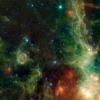
|
-
PIA13044:
-
IC 1795
Full Resolution:
TIFF
(50.18 MB)
JPEG
(1.037 MB)
|

|
2010-04-23 |
|
Wide-field Infrared Survey Explorer (WISE)
|
WISE Telescope
|
4095x4095x3 |
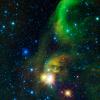
|
-
PIA13064:
-
Star Clusters Young and Old, Near and Far
Full Resolution:
TIFF
(50.31 MB)
JPEG
(1.311 MB)
|

|
2010-04-30 |
|
Wide-field Infrared Survey Explorer (WISE)
|
WISE Telescope
|
2100x1600x3 |
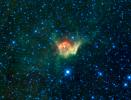
|
-
PIA13083:
-
Thor's Helmet
Full Resolution:
TIFF
(10.09 MB)
JPEG
(321.4 kB)
|

|
2010-05-20 |
|
Wide-field Infrared Survey Explorer (WISE)
|
WISE Telescope
|
4888x2000x3 |
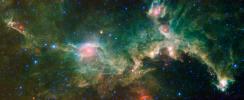
|
-
PIA13111:
-
Seagull Nebula -- Running with the Big Dog
Full Resolution:
TIFF
(29.33 MB)
JPEG
(1.038 MB)
|

|
2010-05-24 |
|
Wide-field Infrared Survey Explorer (WISE)
|
WISE Telescope
|
7252x5142x3 |
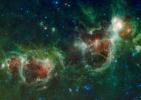
|
-
PIA13112:
-
Heart and Soul
Full Resolution:
TIFF
(111.9 MB)
JPEG
(5.113 MB)
|

|
2010-06-07 |
|
Wide-field Infrared Survey Explorer (WISE)
|
WISE Telescope
|
1600x1600x3 |
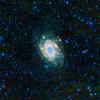
|
-
PIA13114:
-
NGC 6744 -- A Sibling of the Milky Way
Full Resolution:
TIFF
(7.693 MB)
JPEG
(259 kB)
|

|
2010-06-14 |
|
Wide-field Infrared Survey Explorer (WISE)
|
WISE Telescope
|
2000x2000x3 |
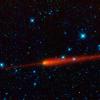
|
-
PIA13115:
-
WISE Catches Comet 65P/Gunn
Full Resolution:
TIFF
(12.02 MB)
JPEG
(377.8 kB)
|

|
2010-07-06 |
|
Wide-field Infrared Survey Explorer (WISE)
|
WISE Telescope
|
3760x3090x3 |
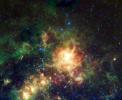
|
-
PIA13118:
-
WISE Spies the Tarantula Nebula
Full Resolution:
TIFF
(34.86 MB)
JPEG
(877.1 kB)
|

|
2010-07-12 |
|
Wide-field Infrared Survey Explorer (WISE)
|
WISE Telescope
|
4095x4095x3 |
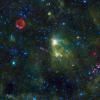
|
-
PIA13119:
-
Tycho's Supernova Remnant
Full Resolution:
TIFF
(50.31 MB)
JPEG
(1.403 MB)
|

|
2010-07-16 |
|
Wide-field Infrared Survey Explorer (WISE)
|
WISE Telescope
|
1191x717x3 |
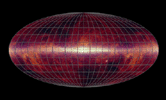
|
-
PIA13120:
-
WISE Eyes the Whole Sky

Full Resolution:
TIFF
(2.565 MB)
JPEG
(122.8 kB)
|

|
2010-07-16 |
|
Wide-field Infrared Survey Explorer (WISE)
|
WISE Telescope
|
4007x3061x3 |
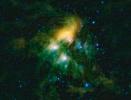
|
-
PIA13121:
-
Seven Sisters Get WISE
Full Resolution:
TIFF
(36.8 MB)
JPEG
(1.671 MB)
|

|
2010-07-27 |
|
Wide-field Infrared Survey Explorer (WISE)
|
WISE Telescope
|
6108x4061x3 |
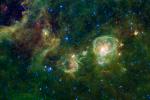
|
-
PIA13122:
-
WISE Peers into the Stellar Darkness
Full Resolution:
TIFF
(74.41 MB)
JPEG
(2.079 MB)
|

|
2010-08-16 |
|
Wide-field Infrared Survey Explorer (WISE)
|
WISE Telescope
|
3906x3084x3 |
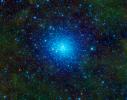
|
-
PIA13125:
-
Omega Centauri
Full Resolution:
TIFF
(36.14 MB)
JPEG
(1.329 MB)
|

|
2010-11-02 |
|
Wide-field Infrared Survey Explorer (WISE)
|
WISE Telescope
|
7333x4666x3 |
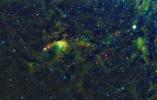
|
-
PIA13443:
-
Star Formation in the Circinus Molecular Cloud Complex
Full Resolution:
TIFF
(102.6 MB)
JPEG
(6.337 MB)
|

|
2010-12-02 |
|
Wide-field Infrared Survey Explorer (WISE)
|
WISE Telescope
|
4000x4700x3 |

|
-
PIA13448:
-
A Flame in Orion's Belt
Full Resolution:
TIFF
(56.4 MB)
JPEG
(974.2 kB)
|

|
2011-01-04 |
|
Wide-field Infrared Survey Explorer (WISE)
|
WISE Telescope
|
4000x4000x3 |
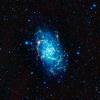
|
-
PIA13452:
-
WISE Spies a Galactic Neighbor
Full Resolution:
TIFF
(48 MB)
JPEG
(1.646 MB)
|

|
2011-02-18 |
|
Wide-field Infrared Survey Explorer (WISE)
|
WISE Telescope
|
2000x2000x3 |
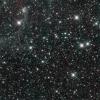
|
-
PIA13458:
-
WISE's Last Light
Full Resolution:
TIFF
(12.02 MB)
JPEG
(464.2 kB)
|

|
2011-03-01 |
|
Wide-field Infrared Survey Explorer (WISE)
|
WISE Telescope
|
1600x1600x3 |
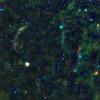
|
-
PIA13885:
-
Beyond the Veil
Full Resolution:
TIFF
(7.693 MB)
JPEG
(703.6 kB)
|

|
2011-04-08 |
|
Wide-field Infrared Survey Explorer (WISE)
|
WISE Telescope
|
6400x6400x3 |
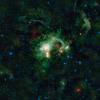
|
-
PIA13995:
-
WISE Eyes Evolution of Massive Stars
Full Resolution:
TIFF
(122.9 MB)
JPEG
(3.002 MB)
|

|
2011-04-14 |
|
Wide-field Infrared Survey Explorer (WISE)
|
WISE Telescope
|
15800x14700x3 |
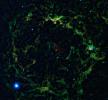
|
-
PIA14040:
-
Orion's Big Head Revealed in Infrared
Full Resolution:
TIFF
(696.8 MB)
JPEG
(24.25 MB)
|

|
2011-05-05 |
|
Wide-field Infrared Survey Explorer (WISE)
|
WISE Telescope
|
5500x2830x3 |
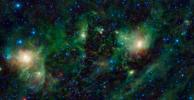
|
-
PIA14092:
-
Nebulae: Not as Close as They Appear
Full Resolution:
TIFF
(46.7 MB)
JPEG
(1.215 MB)
|

|
2011-06-09 |
|
Wide-field Infrared Survey Explorer (WISE)
|
WISE Telescope
|
6450x5850x3 |
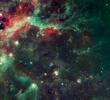
|
-
PIA14102:
-
Star Formation in the Heart of the Swan
Full Resolution:
TIFF
(113.2 MB)
JPEG
(2.875 MB)
|

|
2011-06-24 |
|
Wide-field Infrared Survey Explorer (WISE)
|
WISE Telescope
|
6000x4000x3 |
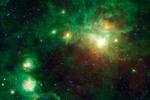
|
-
PIA14105:
-
Star Formation Everywhere You Look
Full Resolution:
TIFF
(72 MB)
JPEG
(1.391 MB)
|

|
2011-11-25 |
|
Wide-field Infrared Survey Explorer (WISE)
|
WISE Telescope
|
11300x10500x3 |
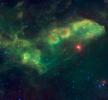
|
-
PIA14881:
-
Jabbah and Associates
Full Resolution:
TIFF
(356 MB)
JPEG
(5.949 MB)
|

|
2012-08-29 |
|
Wide-field Infrared Survey Explorer (WISE)
|
WISE Telescope
|
6500x4500x3 |
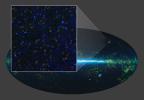
|
-
PIA15810:
-
A Sky Chock-Full of Black Holes
Full Resolution:
TIFF
(87.79 MB)
JPEG
(3.938 MB)
|

|
2013-02-05 |
Orion
|
Wide-field Infrared Survey Explorer (WISE)
|
WISE Telescope
|
5401x5400x3 |
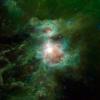
|
-
PIA16684:
-
The Cosmic Hearth
Full Resolution:
TIFF
(87.54 MB)
JPEG
(1.346 MB)
|

|
2005-07-13 |
Cygnus
|
W. M. Keck Observatory
|
Keck I Telescope
|
640x480x3 |
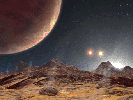
|
-
PIA03520:
-
Land of Three Suns (Artist's Concept Animation)

Full Resolution:
TIFF
(23.04 MB)
JPEG
(574 kB)
|

|
1996-01-29 |
Io
|
Voyager
|
|
1160x1160x3 |
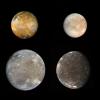
|
-
PIA00012:
-
Galilean Satellites
Full Resolution:
TIFF
(2.14 MB)
JPEG
(74.25 kB)
|

|
1996-08-29 |
Earth
|
Voyager
|
|
565x790x3 |

|
-
PIA00013:
-
Crescent Earth and Moon
Full Resolution:
TIFF
(49.07 kB)
JPEG
(9.171 kB)
|

|
1996-01-29 |
Saturn
|
Voyager
|
|
971x855x3 |
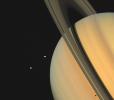
|
-
PIA00024:
-
Saturn With Tethys and Dione
Full Resolution:
TIFF
(1.595 MB)
JPEG
(42.22 kB)
|

|
1996-09-26 |
Dione
|
Voyager
|
VG ISS - Narrow Angle
|
1200x1180x1 |
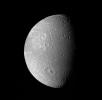
|
-
PIA00028:
-
Dione Mosaic
Full Resolution:
TIFF
(517.1 kB)
JPEG
(91.32 kB)
|

|
1996-01-29 |
Saturn
|
Voyager
|
VG Imaging Science Subsystem
|
1000x1000x3 |

|
-
PIA00030:
-
Saturn With Rhea and Dione (True Color)
Full Resolution:
TIFF
(1.305 MB)
JPEG
(35.65 kB)
|

|
1996-01-29 |
Oberon
|
Voyager
|
|
500x500x3 |
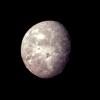
|
-
PIA00034:
-
Oberon at Voyager Closest Approach
Full Resolution:
TIFF
(232.1 kB)
JPEG
(14.1 kB)
|

|
1996-01-29 |
Titania
|
Voyager
|
VG ISS - Narrow Angle
|
700x700x3 |
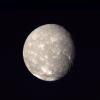
|
-
PIA00036:
-
Titania High-Resolution Color Composite
Full Resolution:
TIFF
(1.017 MB)
JPEG
(24.12 kB)
|

|
2000-06-02 |
Ariel
|
Voyager
|
VG ISS - Narrow Angle
|
800x800x1 |
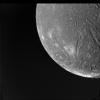
|
-
PIA00037:
-
Ariel at Voyager Closest Approach
Full Resolution:
TIFF
(301.1 kB)
JPEG
(46.74 kB)
|

|
1996-01-29 |
Miranda
|
Voyager
|
|
764x785x1 |

|
-
PIA00038:
-
Miranda - 'Chevron' Grooves
Full Resolution:
TIFF
(376.2 kB)
JPEG
(73.58 kB)
|

|
1996-01-29 |
Titania
|
Voyager
|
VG ISS - Narrow Angle
|
640x760x1 |

|
-
PIA00039:
-
Titania - Highest Resolution Voyager Picture
Full Resolution:
TIFF
(145.1 kB)
JPEG
(33.78 kB)
|

|
1996-01-31 |
Umbriel
|
Voyager
|
VG ISS - Narrow Angle
|
400x400x1 |
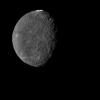
|
-
PIA00040:
-
Umbriel at Closest Approach
Full Resolution:
TIFF
(34.1 kB)
JPEG
(7.48 kB)
|

|
1996-01-29 |
Ariel
|
Voyager
|
VG ISS - Narrow Angle
|
845x650x3 |
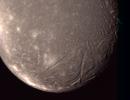
|
-
PIA00041:
-
Ariel - Highest Resolution Color Picture
Full Resolution:
TIFF
(1.506 MB)
JPEG
(45.92 kB)
|

|
1996-08-01 |
Miranda
|
Voyager
|
|
2500x2200x1 |
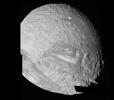
|
-
PIA00043:
-
Miranda - High Resolution Mosaic
Full Resolution:
TIFF
(2.831 MB)
JPEG
(294.4 kB)
|

|
1996-01-29 |
Miranda
|
Voyager
|
VG ISS - Narrow Angle
|
1016x1002x1 |
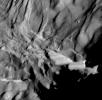
|
-
PIA00044:
-
Miranda High Resolution of Large Fault
Full Resolution:
TIFF
(330.8 kB)
JPEG
(75.76 kB)
|

|
1996-01-29 |
N Rings
|
Voyager
|
VG ISS - Wide Angle
|
785x1000x1 |

|
-
PIA00053:
-
Neptune Rings and 1989N2
Full Resolution:
TIFF
(156.9 kB)
JPEG
(117.3 kB)
|

|
1996-01-29 |
Miranda
|
Voyager
|
VG ISS - Narrow Angle
|
789x768x1 |
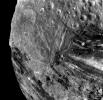
|
-
PIA00140:
-
Miranda Fractures, Grooves and Craters
Full Resolution:
TIFF
(270 kB)
JPEG
(99.9 kB)
|

|
1996-01-29 |
Miranda
|
Voyager
|
VG ISS - Narrow Angle
|
774x787x1 |

|
-
PIA00141:
-
Miranda's Geologic History (Variety of Terrain)
Full Resolution:
TIFF
(288.8 kB)
JPEG
(63.36 kB)
|

|
1998-06-04 |
Triton
|
Voyager
|
|
4500x3500x3 |
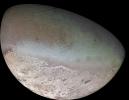
|
-
PIA00317:
-
Global Color Mosaic of Triton
Full Resolution:
TIFF
(29.1 MB)
JPEG
(2.06 MB)
|

|
1998-06-04 |
Io
|
Voyager
|
|
2572x1286x3 |
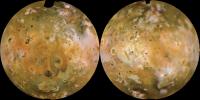
|
-
PIA00318:
-
Io Shown in Lambertian Equal Area Projection and in Approximately Natural Color
Full Resolution:
TIFF
(8.241 MB)
JPEG
(259.1 kB)
|

|
1998-06-04 |
Io
|
Voyager
|
|
2625x1840x3 |
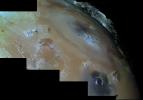
|
-
PIA00323:
-
Eruption of Pele
Full Resolution:
TIFF
(8.268 MB)
JPEG
(268 kB)
|

|
1998-06-04 |
Ganymede
|
Voyager
|
VG ISS - Wide Angle
|
1024x520x3 |
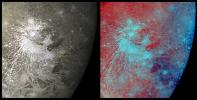
|
-
PIA00334:
-
Crater Rays on Ganymede
Full Resolution:
TIFF
(1.644 MB)
JPEG
(96.83 kB)
|

|
1998-06-04 |
Triton
|
Voyager
|
|
3000x3000x3 |
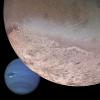
|
-
PIA00340:
-
Montage of Neptune and Triton
Full Resolution:
TIFF
(20.19 MB)
JPEG
(1.243 MB)
|

|
1998-06-04 |
Enceladus
|
Voyager
|
VG ISS - Narrow Angle
|
1004x1004x3 |
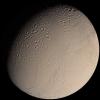
|
-
PIA00347:
-
Voyager 2 Color Image of Enceladus, Almost Full Disk
Full Resolution:
TIFF
(1.99 MB)
JPEG
(95.52 kB)
|

|
1998-06-04 |
Iapetus
|
Voyager
|
VG ISS - Narrow Angle
|
325x350x3 |

|
-
PIA00348:
-
Iapetus Bright and Dark Terrains
Full Resolution:
TIFF
(53.51 kB)
JPEG
(6.616 kB)
|

|
1998-06-04 |
Saturn
|
Voyager
|
|
860x1230x3 |

|
-
PIA00349:
-
Saturn and 4 Icy Moons, Enhanced Color
Full Resolution:
TIFF
(1.15 MB)
JPEG
(48.46 kB)
|

|
1996-07-17 |
Ganymede
|
Voyager
|
VG ISS - Narrow Angle
|
300x300x1 |
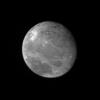
|
-
PIA00351:
-
Ganymede at 2.6 million miles
Full Resolution:
TIFF
(33.81 kB)
JPEG
(4.17 kB)
|

|
1996-07-17 |
Ganymede
|
Voyager
|
VG ISS - Narrow Angle
|
300x300x3 |
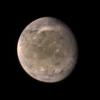
|
-
PIA00352:
-
Ganymede at 3.4 million miles
Full Resolution:
TIFF
(133.4 kB)
JPEG
(5.592 kB)
|

|
1999-03-15 |
Ganymede
|
Voyager
|
VG ISS - Narrow Angle
|
600x600x3 |
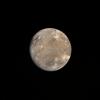
|
-
PIA00353:
-
Ganymede Full Disk
Full Resolution:
TIFF
(310.5 kB)
JPEG
(13.11 kB)
|

|
1999-03-06 |
Jupiter
|
Voyager
|
VG ISS - Narrow Angle
|
1000x1000x3 |
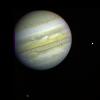
|
-
PIA00358:
-
Jupiter and Three Galilean Satellites
Full Resolution:
TIFF
(1.514 MB)
JPEG
(50.61 kB)
|

|
1996-11-26 |
U Rings
|
Voyager
|
VG ISS - Narrow Angle
|
996x1009x1 |

|
-
PIA00368:
-
Uranus Satellites
Full Resolution:
TIFF
(760.7 kB)
JPEG
(134.5 kB)
|

|
1996-11-13 |
Jupiter
|
Voyager
|
VG ISS - Narrow Angle
|
850x575x3 |
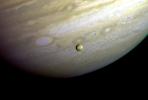
|
-
PIA00371:
-
Jupiter - Io In Front of Jupiter's Turbulent Clouds
Full Resolution:
TIFF
(797.6 kB)
JPEG
(28.95 kB)
|

|
1997-01-09 |
Io
|
Voyager
|
VG ISS - Narrow Angle
|
140x140x1 |
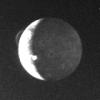
|
-
PIA00379:
-
Volcanic Eruptions on Io
Full Resolution:
TIFF
(7.186 kB)
JPEG
(2.809 kB)
|

|
1998-06-08 |
Saturn
|
Voyager
|
|
860x1230x3 |

|
-
PIA00400:
-
Saturn and 4 Icy Moons in Natural Color
Full Resolution:
TIFF
(1.061 MB)
JPEG
(47.25 kB)
|

|
1996-09-13 |
Sol (our sun)
|
Voyager
|
VG ISS - Wide Angle
|
3430x2650x3 |
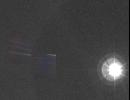
|
-
PIA00450:
-
Solar System Portrait - View of the Sun, Earth and Venus
Full Resolution:
TIFF
(8.676 MB)
JPEG
(515.8 kB)
|

|
1996-09-26 |
Callisto
|
Voyager
|
VG ISS - Narrow Angle
|
800x800x3 |
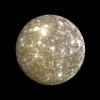
|
-
PIA00457:
-
Callisto False Color
Full Resolution:
TIFF
(789 kB)
JPEG
(49.94 kB)
|

|
1996-09-26 |
Europa
|
Voyager
|
VG ISS - Narrow Angle
|
704x680x3 |
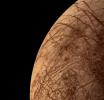
|
-
PIA00459:
-
Europa During Voyager 2 Closest Approach
Full Resolution:
TIFF
(895.6 kB)
JPEG
(49.13 kB)
|

|
1997-09-25 |
Titan
|
Voyager
|
VG ISS - Narrow Angle
|
400x400x3 |
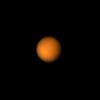
|
-
PIA00733:
-
Titan's Brighter Southern Hemisphere
Full Resolution:
TIFF
(37.73 kB)
JPEG
(4.127 kB)
|

|
1998-08-28 |
Saturn
|
Voyager
|
VG ISS - Narrow Angle
|
1000x1000x3 |
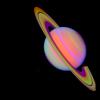
|
-
PIA01143:
-
Saturn With Rhea and Dione (false color)
Full Resolution:
TIFF
(689.2 kB)
JPEG
(41.04 kB)
|

|
1998-11-11 |
U Rings
|
Voyager
|
VG ISS - Narrow Angle
|
400x200x1 |
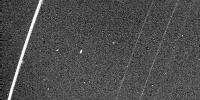
|
-
PIA01350:
-
Rings of Uranus at 1.44 kilometers
Full Resolution:
TIFF
(23.94 kB)
JPEG
(28.94 kB)
|

|
1998-10-13 |
Oberon
|
Voyager
|
VG ISS - Narrow Angle
|
1500x1500x1 |
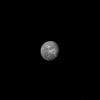
|
-
PIA01352:
-
Uranus' Largest Moon Oberon
Full Resolution:
TIFF
(60.69 kB)
JPEG
(33.11 kB)
|

|
1999-06-21 |
Uranus
|
Voyager
|
VG ISS - Narrow Angle
|
512x512x1 |
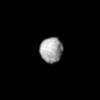
|
-
PIA01357:
-
Uranus Moon - 1985U1
Full Resolution:
TIFF
(17.25 kB)
JPEG
(4.796 kB)
|

|
1998-12-05 |
Uranus
|
Voyager
|
VG ISS - Narrow Angle
|
1567x929x3 |
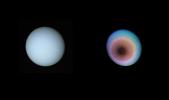
|
-
PIA01360:
-
Uranus, Toward the Planet's Pole of Rotation
Full Resolution:
TIFF
(640.1 kB)
JPEG
(39.86 kB)
|

|
1999-10-14 |
Io
|
Voyager
|
VG ISS - Narrow Angle
|
512x512x3 |
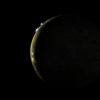
|
-
PIA01362:
-
Io
Full Resolution:
TIFF
(215.9 kB)
JPEG
(16.02 kB)
|

|
1998-12-05 |
Saturn
|
Voyager
|
VG ISS - Narrow Angle
|
1200x1500x3 |

|
-
PIA01364:
-
Saturn Taken from Voyager 2
Full Resolution:
TIFF
(2.209 MB)
JPEG
(61.29 kB)
|

|
1998-11-13 |
Dione
|
Voyager
|
VG ISS - Narrow Angle
|
600x450x1 |
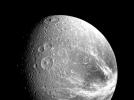
|
-
PIA01366:
-
The Saturnian Moon Dione
Full Resolution:
TIFF
(161.4 kB)
JPEG
(34.59 kB)
|

|
1998-12-05 |
Enceladus
|
Voyager
|
VG ISS - Narrow Angle
|
1000x1000x3 |
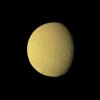
|
-
PIA01367:
-
The Saturnian Moon Enceladus
Full Resolution:
TIFF
(701.7 kB)
JPEG
(88.71 kB)
|

|
1998-12-05 |
Io
|
Voyager
|
VG ISS - Narrow Angle
|
600x600x3 |
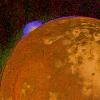
|
-
PIA01368:
-
Jupiter's Moon Io
Full Resolution:
TIFF
(736.2 kB)
JPEG
(138.3 kB)
|

|
1998-11-08 |
Dione
|
Voyager
|
VG ISS - Narrow Angle
|
500x500x1 |
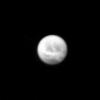
|
-
PIA01373:
-
Saturn's Satellite Dione
Full Resolution:
TIFF
(19.82 kB)
JPEG
(5.472 kB)
|

|
1998-11-17 |
S Rings
|
Voyager
|
VG ISS - Narrow Angle
|
541x400x1 |

|
-
PIA01381:
-
Thin Ringlet of Saturn's A-ring
Full Resolution:
TIFF
(46.43 kB)
JPEG
(26.88 kB)
|

|
1999-01-06 |
Tethys
|
Voyager
|
VG ISS - Narrow Angle
|
900x2100x1 |

|
-
PIA01385:
-
Pictures of Tethys' Large Crater
Full Resolution:
TIFF
(398.1 kB)
JPEG
(121.7 kB)
|

|
1999-02-23 |
Enceladus
|
Voyager
|
VG ISS - Narrow Angle
|
1000x1000x1 |
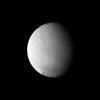
|
-
PIA01395:
-
Saturn - High-resolution Filtered Image of Enceladus
Full Resolution:
TIFF
(216.1 kB)
JPEG
(64.96 kB)
|

|
1999-03-06 |
Tethys
|
Voyager
|
VG ISS - Narrow Angle
|
600x600x1 |
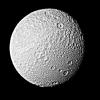
|
-
PIA01397:
-
Photograph of Saturns' Satellite Tethys
Full Resolution:
TIFF
(115.9 kB)
JPEG
(56.5 kB)
|

|
1999-03-06 |
Tethys
|
Voyager
|
VG ISS - Narrow Angle
|
400x400x1 |
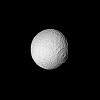
|
-
PIA01398:
-
Saturn - Large Crater on Tethys
Full Resolution:
TIFF
(21.34 kB)
JPEG
(8.615 kB)
|

|
1999-04-11 |
Tethys
|
Voyager
|
VG ISS - Narrow Angle
|
250x170x1 |
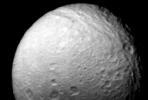
|
-
PIA01399:
-
Saturn's Moon Tethys
Full Resolution:
TIFF
(17.58 kB)
JPEG
(6.221 kB)
|

|
1998-10-30 |
Jupiter
|
Voyager
|
|
2081x1654x3 |
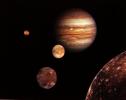
|
-
PIA01481:
-
Jupiter System Montage
Full Resolution:
TIFF
(4.652 MB)
JPEG
(148.9 kB)
|

|
1998-11-02 |
Io
|
Voyager
|
|
1573x1738x3 |

|
-
PIA01485:
-
South Polar Region of Io
Full Resolution:
TIFF
(8.229 MB)
JPEG
(257.5 kB)
|

|
1998-10-30 |
Miranda
|
Voyager
|
|
1581x1600x1 |

|
-
PIA01490:
-
South Polar View of Miranda
Full Resolution:
TIFF
(955.1 kB)
JPEG
(160.1 kB)
|

|
1998-10-30 |
Neptune
|
Voyager
|
|
2073x2678x3 |

|
-
PIA01491:
-
Neptune and Triton
Full Resolution:
TIFF
(3.424 MB)
JPEG
(287.1 kB)
|

|
1999-02-08 |
Europa
|
Voyager
|
VG ISS - Narrow Angle
|
864x922x1 |

|
-
PIA01504:
-
Europa's Evening Terminator
Full Resolution:
TIFF
(792.2 kB)
JPEG
(127.9 kB)
|

|
1999-03-15 |
Callisto
|
Voyager
|
VG ISS - Narrow Angle
|
300x300x3 |
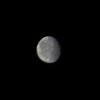
|
-
PIA01510:
-
Callisto From 8,023,000 kilometers
Full Resolution:
TIFF
(34.73 kB)
JPEG
(2.891 kB)
|

|
1999-03-15 |
Callisto
|
Voyager
|
VG ISS - Narrow Angle
|
300x300x1 |
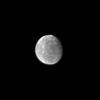
|
-
PIA01511:
-
Callisto From 7,000,000 kilometers
Full Resolution:
TIFF
(18.9 kB)
JPEG
(2.549 kB)
|

|
1999-03-13 |
Io
|
Voyager
|
VG ISS - Narrow Angle
|
783x930x3 |

|
-
PIA01514:
-
Io Surface Deposits and Volcanic Craters
Full Resolution:
TIFF
(2.1 MB)
JPEG
(70.93 kB)
|

|
1999-03-13 |
Ganymede
|
Voyager
|
VG ISS - Narrow Angle
|
830x650x3 |
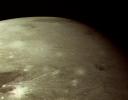
|
-
PIA01515:
-
Bright Ray Craters in Ganymede's Northern Hemisphere
Full Resolution:
TIFF
(974.3 kB)
JPEG
(49.71 kB)
|

|
1999-03-13 |
Ganymede
|
Voyager
|
VG ISS - Narrow Angle
|
875x905x3 |

|
-
PIA01516:
-
Cratering and Grooved Terrain on Ganymede
Full Resolution:
TIFF
(1.662 MB)
JPEG
(92.41 kB)
|

|
1999-03-13 |
Ganymede
|
Voyager
|
VG ISS - Narrow Angle
|
860x901x3 |

|
-
PIA01517:
-
Ganymede's Equatorial Region
Full Resolution:
TIFF
(1.486 MB)
JPEG
(91.2 kB)
|

|
1999-05-08 |
Titan
|
Voyager
|
|
1296x960x3 |
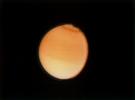
|
-
PIA01532:
-
Titan's Cloud Systems
Full Resolution:
TIFF
(1.339 MB)
JPEG
(38.87 kB)
|

|
1999-05-08 |
Titan
|
Voyager
|
|
1715x1825x3 |

|
-
PIA01533:
-
Titan Haze
Full Resolution:
TIFF
(7.91 MB)
JPEG
(172.2 kB)
|

|
1999-04-11 |
Enceladus
|
Voyager
|
VG ISS - Narrow Angle
|
450x469x1 |

|
-
PIA01950:
-
Surface of Enceladus
Full Resolution:
TIFF
(178 kB)
JPEG
(38.89 kB)
|